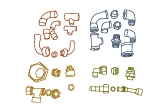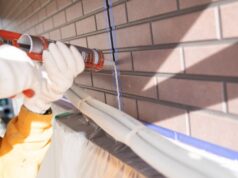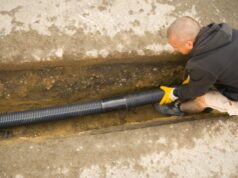
Different types of pipes need to be connected in different ways – and how they’re installed in your home can affect not only your warranties, but also the amount of noise they make.

There are several ways to connect pipes, and they are generally referred to as pipe joints or fittings. Connections and joints are fitted when the direction of the pipe run needs to be changed, a connection is made to a plumbing fixture (e.g. a basin, toilet etc.) or when pipes of a different size or material need to be joined. Different systems are used for connecting the various materials. Incorrectly installed or connected pipes can void your warranties and lead to noise or damage.
Copper pipe connection systems
Previously, copper was joined by some type of solder welding but this method has been largely superseded by mechanical joints in residential construction. The current methods of joining copper are:
- Brass compression – These are metal compression fittings made of brass or chrome-plated brass. The pipe is pushed into the fitting and as the nuts are tightened on the threaded section of the fitting, an olive (a metal ring used in plumbing to create a seal for brass compression joints) inside the fitting creates the seal.
- Brass push-fits – The pipes are pushed into the end of the connection where it is secured firmly in position by way of a stainless steel grab-ring.
- Brass crimp connectors – Oversized sleeves are pushed onto the two sections of pipe to be joined. The sleeves are then pushed up to the connection point where they are secured by a crimping tool.
Plastic pipe connection systems
Hot & cold pipe (pressure systems)
There are a range of approved joining systems which each supplier/brand offers. It is important that your plumber uses the manufacturer’s recommended connection system to ensure your warranty’s still intact. This applies to both hot and cold water systems, as well as for gas reticulation.
Sanitary and stormwater systems (non-pressure systems)
The most common joining method for these systems is solvent welding, where the plumber uses a two-part system; a cleaning primer is applied first to the jointing area, which is then followed by the application of a solvent glue. The two pipes and fittings are then pushed together to form a seal.
- Make sure your plumber uses appropriate bracketing to properly secure the pipeline to the building structure in a way that reduces the risk of water hammer. If you are running your piping through a metal building frame, make certain the plumber installs suitable rubber sleeves which separate the pipe from the frame, as this will drastically reduces the likelihood of noise transfer.





